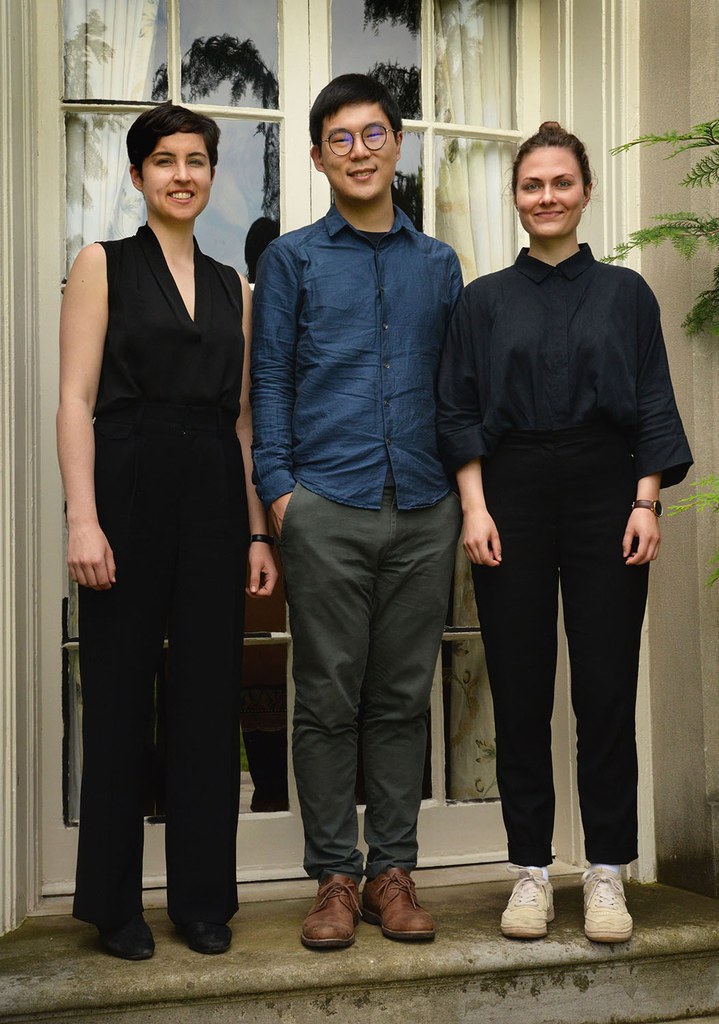Mellon Symposium Award
Charlotte Leib, Harvard University, MLA and MDes candidate 2019
Organized by senior fellow Sonja Dümpelmann, the symposium “Landscape, Sport, Environment: The Spaces of Sport from the Early Modern Period to Today” invited scholars and practitioners to consider the topoi of sports landscapes not only as spaces of recreation and competition, but also as grounds for further study through the lenses of spatial, environmental, and social history.
Thirteen speakers took up the task, presenting on topics that collectively spanned three continents and five centuries. Following the lead of Dümpelmann, who stated in her introduction that she was “deliberately avoiding a set definition of sport landscapes” to encourage explorations of the changing meanings, uses, and forms of spaces of sport in time and place, the speakers explored a variety of sites and sporting cultures in their presentations: from the ambulatory spaces of the early modern Italian villa to the landscapes that became part of black sporting culture in 20th-century Chicago. The diversity of topics addressed in the symposium showed the extent to which focusing on sports—broadly construed—can reveal overlaps between the proverbial “playing fields” that historians, geographers, and landscape architects typically occupy. Yet, as was highlighted in the closing roundtable, deeper and more critical investigations of the design and organization of specific sport landscapes are needed if we are to understand how, as Garden and Landscape Studies Program Director John Beardsley remarked at the close of the symposium, “we can move away from the idea of landscape as scenery to understand landscape as a bodily experience.”
Find out more about the Mellon Initiative in Urban Landscape Studies.
Bliss Symposium Awards
Anika Fleige, University of Kassel, MLA candidate 2019
“Landscape, Sport, Environment: The Spaces of Sport from the Early Modern Period to Today” gave me both an insight on the current international discourse and a chance to learn about the sport-landscape relationships throughout history.
Speakers from all over the world presented impressively different designs of sports landscapes and showed their social and cultural contexts, functions, and meanings. In particular, I got to know about the development of landscapes for exercising, horse racing, hunting, and healthy bodies. The symposium advanced my studies by exploring landscape architecture-based solutions to current challenges like climate change. I learned about how public open spaces for sports activities can be planned and designed without neglecting nature and the environment. Two presentations approached Olympic landscapes: the Komazawa Olympic Park and the Munich Olympic Park. In comparison to the Munich Olympic Park, it was very interesting to experience the Japanese architecture, landscape architecture, and garden culture in Komazawa Olympic Park.
Zishen Wen, Harvard University, MLA candidate 2019
I learned a lot from speakers’ topics, which looked at the relationship between sports and landscape from historical, feminist, anthropological, and urban space perspectives. Christian Jaser’s lecture about horse racing and urban streetscapes was very intriguing. I appreciated his solid research on horse racing and his provocative way of linking the sport to urban beautification. His research on street scale and paving material under the influence of the popular horse racing in Italy and Germany ranged in scope from urban scale to the detail of the landscape design. Marta Kurkowska-Budzan’s research methods on Polish wild stadiums also inspired me. Her research was based on the archive of a great number of personal diaries donated by citizens over the years. By looking at the diaries, Marta traced the locations, times, and characters of different wild stadiums in Poland. From this presentation, I learned a new way of carrying out research on temporary, informal, and everyday landscapes using an anthropological and historical approach.
Find out more about Bliss Symposium Awards for graduate students and advanced undergraduates.
Image: L. Späth, Gärten, Sport- und Spielplätze (Berlin: L. Späth, 1926)


